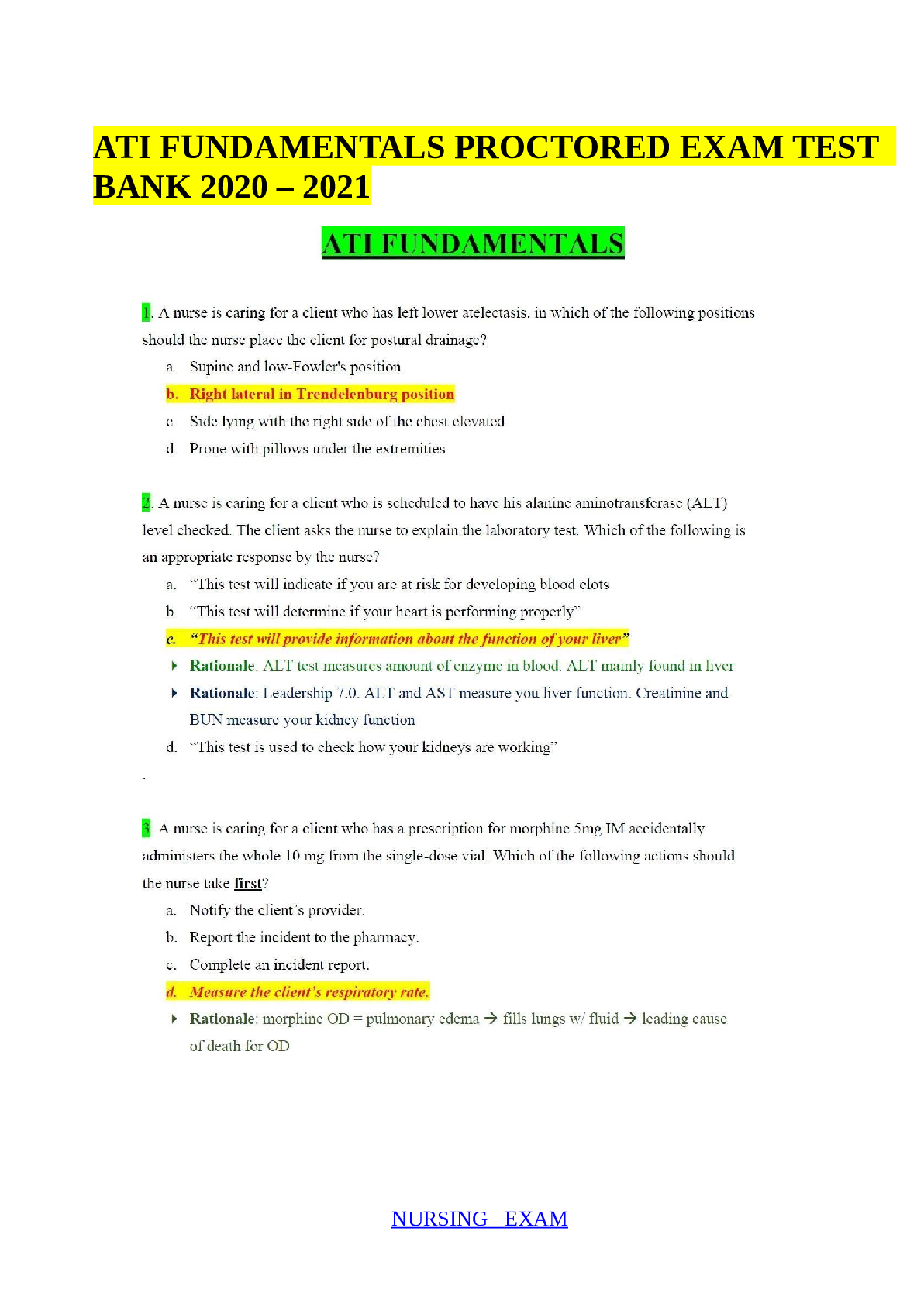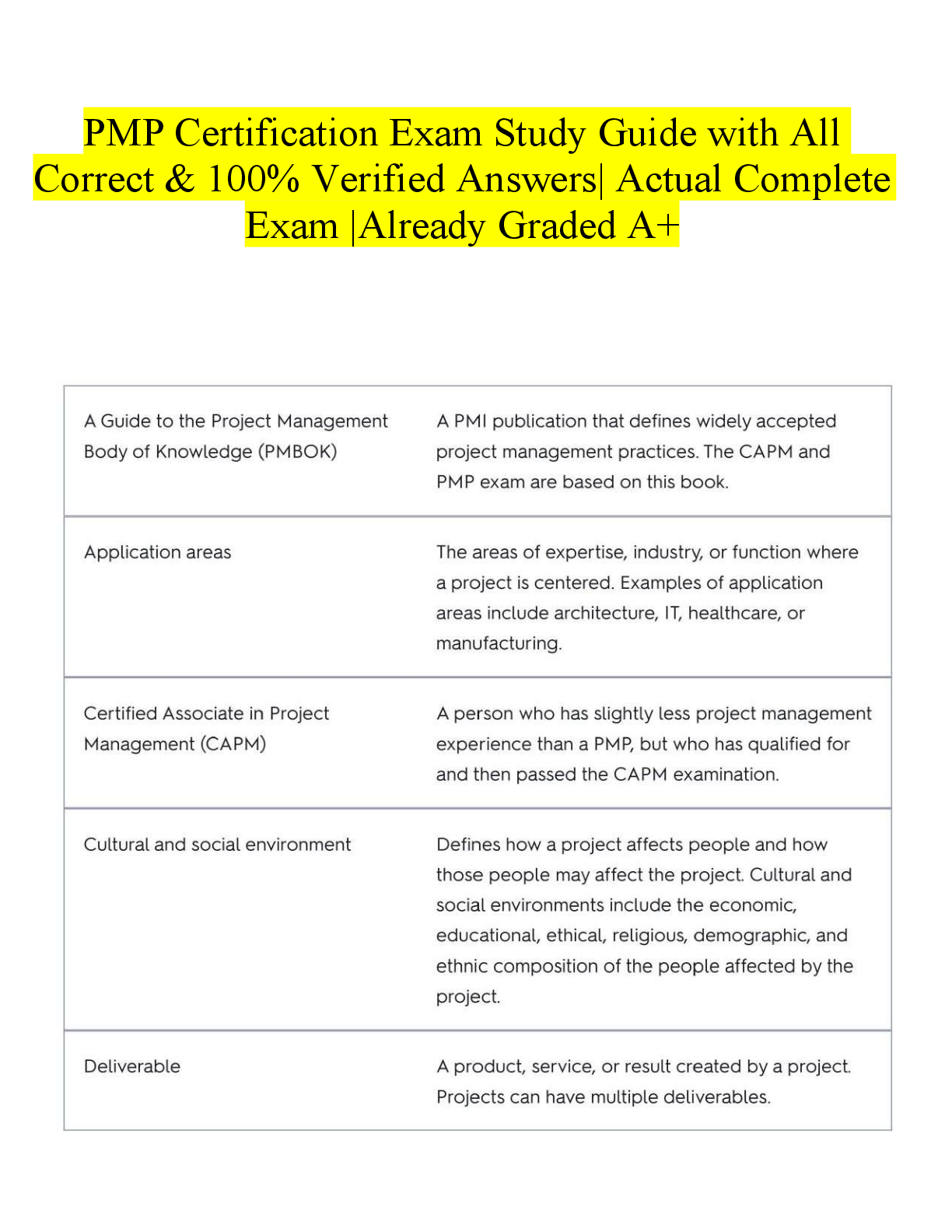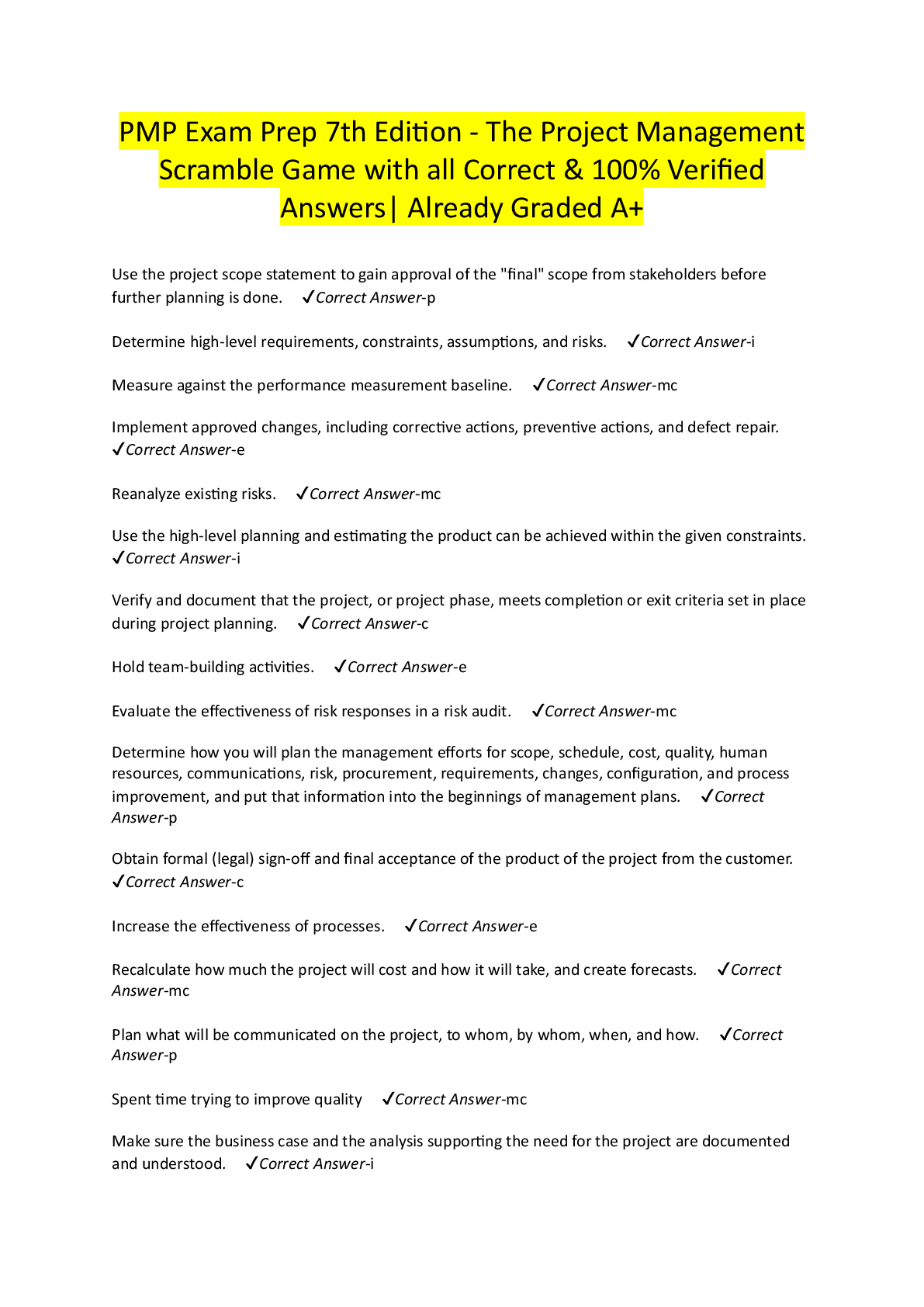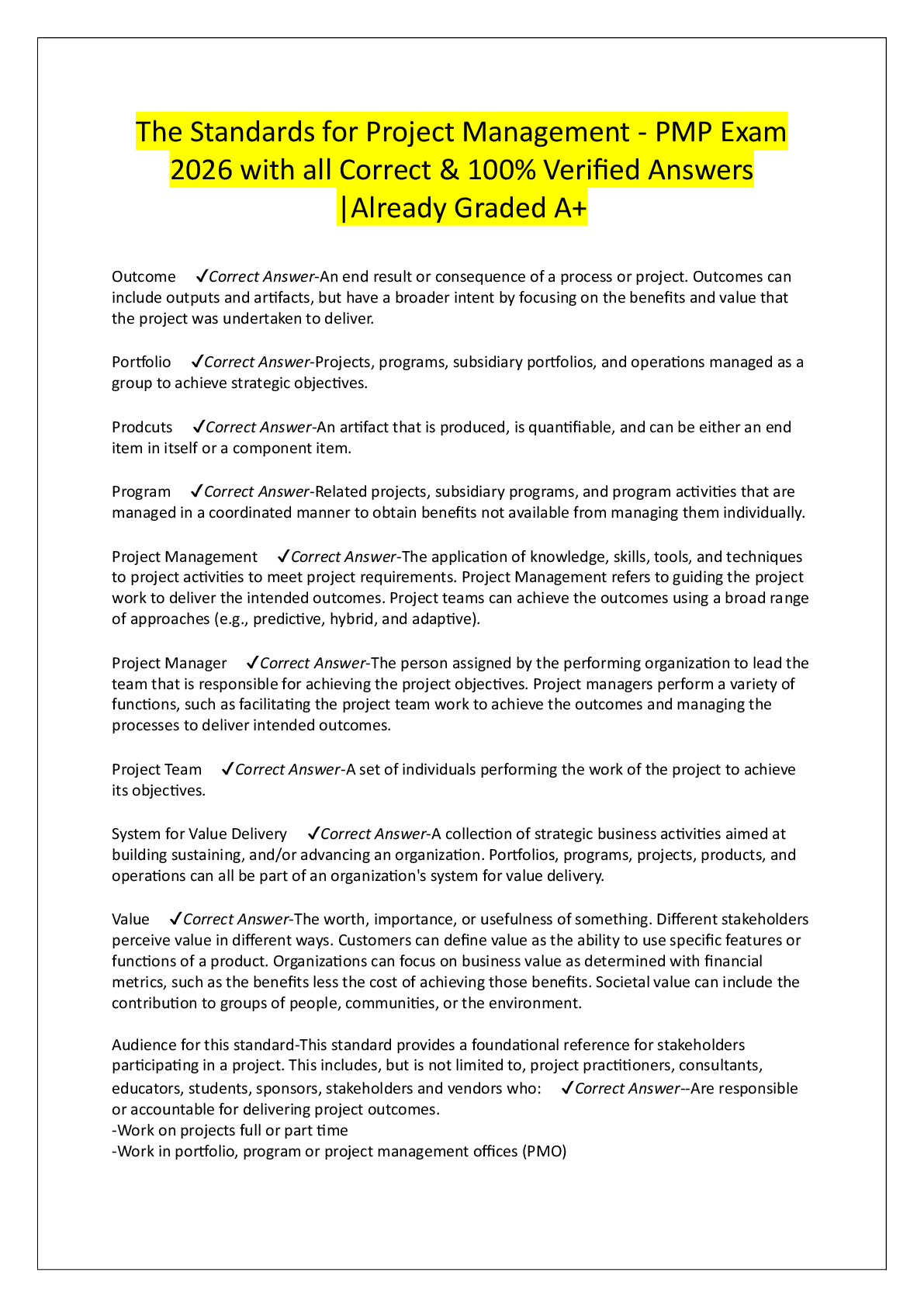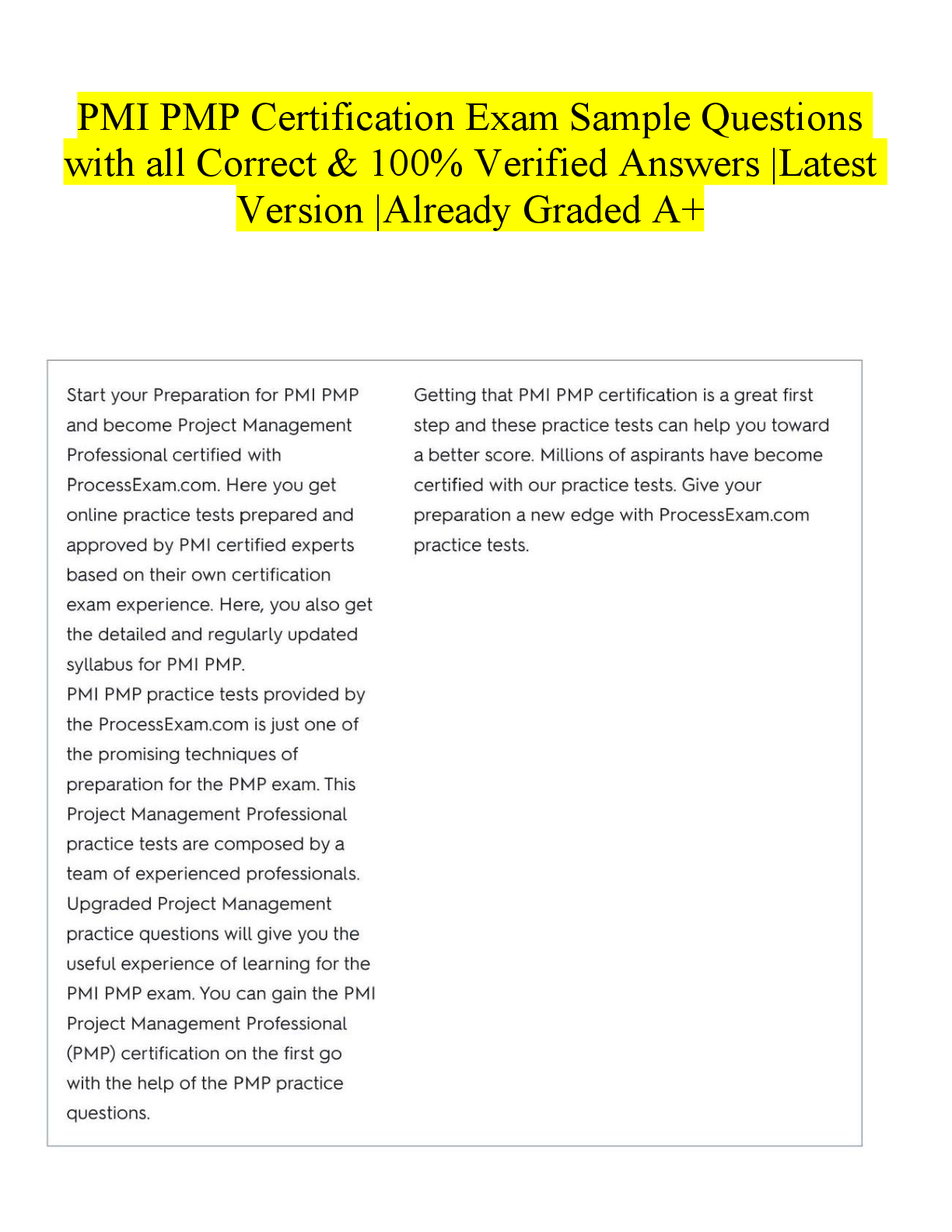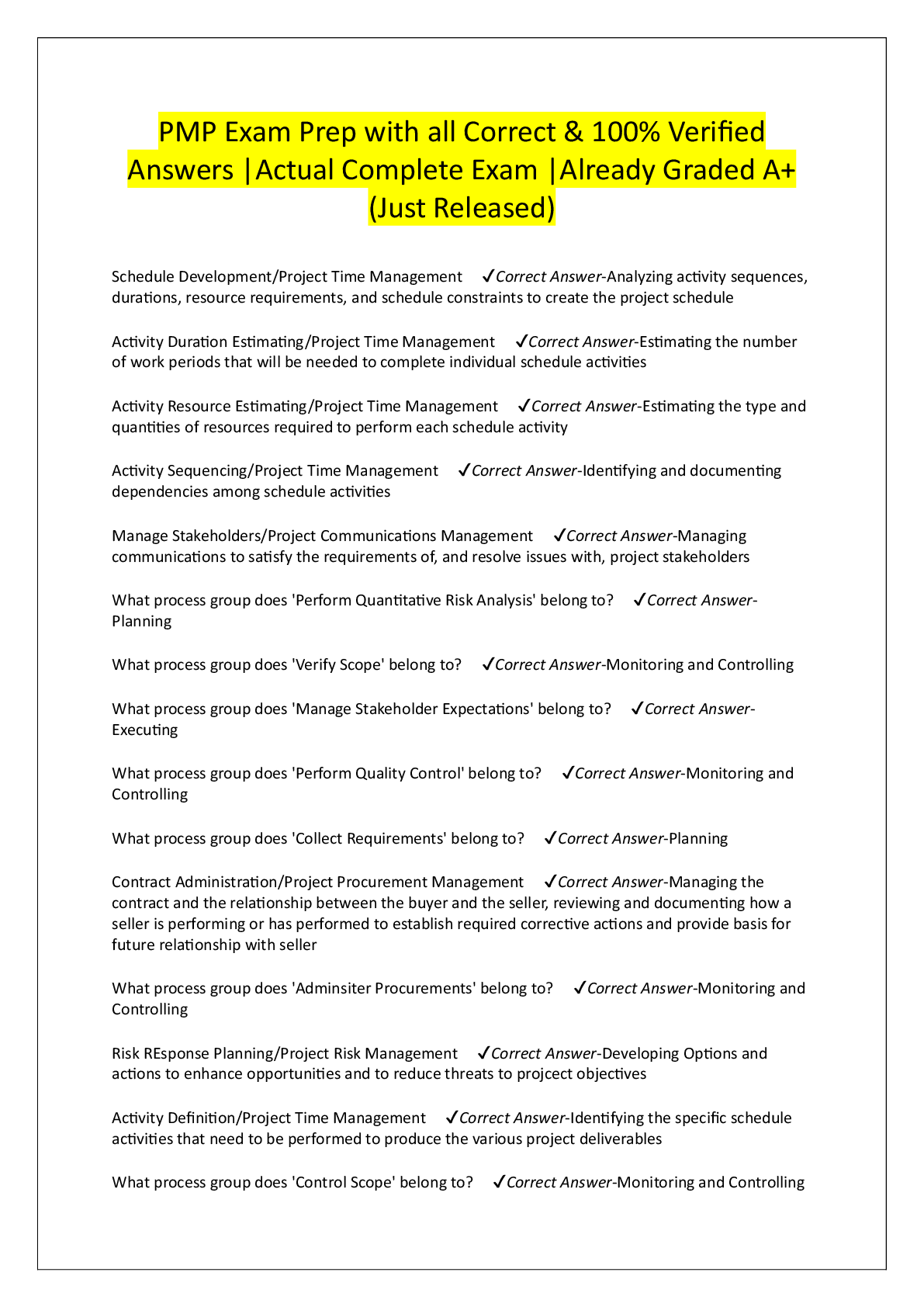Anatomy > EXAM > BIO201_MH_V3 Topic 16: Functional Organization of the Endocrine System | Already GRADED A+ (All)
BIO201_MH_V3 Topic 16: Functional Organization of the Endocrine System | Already GRADED A+
Document Content and Description Below
•BIO201_MH_V3 •Topic 16: Functional Organization of the Endocrine System Question 1 Question text When a hormone binds to a membrane–bound receptor and activates G proteins, Select one: a. ... ion channels could be opened. b. IP3 may be activated. c. cyclic AMP production may be increased. d. DAG may be activated. e. All of the choices may occur from activated G proteins. Question 2 Question text Most endocrine glands communicate with their target tissues using _____ signals. Select one: a. frequency-modulated b. amplitude-modulated c. pitch-modulated d. resonance-modulated Question 3 Question text Which of the following occurs when a hormone binds to a nuclear receptor? Select one: a. activation of cyclic AMP b. activation of mRNA synthesis c. increased lipid synthesis by ribosomes d. opens membrane channels e. alters membrane permeability Question 4 Question text All of the following chemical messengers may be listed in multiple functional classes except Select one: a. Eicosanoids b. Epinephrine c. Prostaglandins d. Acetylcholine Question 5 Question text Receptors for most lipid-soluble hormones are located Select one: a. in the cytoplasm of their target cells. b. on the plasma membrane of their target cells. c. in the lysosomes of their target cells. d. on the nuclear membrane of their target cells. e. in the nucleus or cytoplasm of their target cells. Question 6 Question text Parathyroid hormone is released when blood calcium levels decrease. This is an example of control by __________ stimuli. Select one: a. hormonal b. neural c. humoral d. visceral Question 7 Question text A chemical produced in a cell that activates specific processes in response to a hormone interaction with a membrane-bound receptor is referred to as a(n) _____. Select one: a. hormone response element b. transcription factor c. messenger RNA d. intracellular mediator Question 8 Question text In general, the response of target cells to endocrine stimulation is _______ than their response to nervous stimulation. Select one: a. faster and briefer b. slower and more prolonged c. more accurate d. more restricted to a small area of the body e. more intense Question 9 Question text Increased testosterone levels reduce the secretion of gonadotropin-releasing hormone from the anterior pituitary. This is an example of Select one: a. inhibition of hormone release by humoral stimuli b. inhibition of hormone release by neural stimuli c. inhibition of hormone release by external stimuli d. inhibition of hormonal release by environmental stimuli e. inhibition of hormone release by hormonal stimuli Question 10 Question text David has been feeling tired lately, and after having blood work completed, it shows elevated TSH, low iodine, and low thyroid hormone levels. Predict the possible cause from the choices below. Select one: a. David could possibly have a thyroid tumor. b. David may have iodine deficiency that is causing his thyroid to produce too little thyroid hormone. c. David could have a pituitary gland tumor. d. Too little information is given to determine the cause. Question 11 Question text Which of the following is NOT a regulatory function of the endocrine system? Select one: a. Regulates the rate of metabolism. b. Controls development and functions of the reproductive system. c. Regulates equilibrium and balance from the inner ear. d. Prepares the body for physical activity and stress. e. Regulates heart rate and blood pressure. Question 12 Question text All of the following are regulatory functions of the endocrine system except Select one: a. labor contractions. b. development of tissues. c. immune functions. d. metabolic rate. e. thermoregulation. Question 13 Question text Which of the following is NOT a regulatory function of the endocrine system? Select one: a. Regulates water balance by controlling the solute concentration of the blood. b. Regulates skeletal muscle contraction strength. c. Regulates satiation and the breakdown of food into individual nutrients. d. Regulates the rate of metabolism. e. Regulates the levels of nutrients such as glucose in the blood. Question 14 Question text Which of the following situations might be the result of hypersecretion of glucocorticoids? Select one: a. weight loss b. hypoglycemia c. depression of the immune response d. increased plasma levels of ACTH e. proteins and fats are unused Question 15 Question text Describe the mechanism of action of thyroid hormones. Select one: a. These hormones interact with membrane signaling proteins. b. Thyroid hormones bind to molecules of the cytoskeleton in the cell cytoplasm. c. Thyroid hormones bind to epithelial cell membranes that line the intestine. d. These hormones bind to molecules of the cytoskeleton in the cell cytoplasm. Question 16 Question text The hypothalamohypophysial portal system carries hormones from the Select one: a. anterior pituitary to the hypothalamus. b. posterior pituitary to the hypothalamus. c. hypothalamus to the anterior pituitary. d. hypothalamus to the posterior pituitary. e. anterior pituitary to posterior pituitary. Question 17 Question text All of the following classes of hormones are secreted by the adrenal cortex except Select one: a. mineralcorticoids. b. glucocorticoids. c. androgens. d. steroid hormones. e. water-soluble peptides. Question 18 Question text The embryonic origin of the posterior pituitary gland is Select one: a. epithelium from the oral cavity. b. nervous tissue from the area of the hypothalamus. c. an outpocket of the nasal cavity. d. glandular tissue from the cerebrum. Question 19 Question text During exercise, the energy necessary to sustain skeletal muscle cell contraction comes from Select one: a. increased insulin production. b. increased epinephrine and glucagon release. c. decreased sympathetic nervous system activity. d. storing glucose as glycogen. e. conservation of glucose. Question 20 Question text All of the following are changes due to age-related decreases in endocrine secretions, except Select one: a. decrease in muscle mass. b. decrease in bone mass. c. change in sleeping patterns. d. increased susceptibility to infection. e. inability to regulate blood glucose levels. [Show More]
Last updated: 3 years ago
Preview 1 out of 8 pages
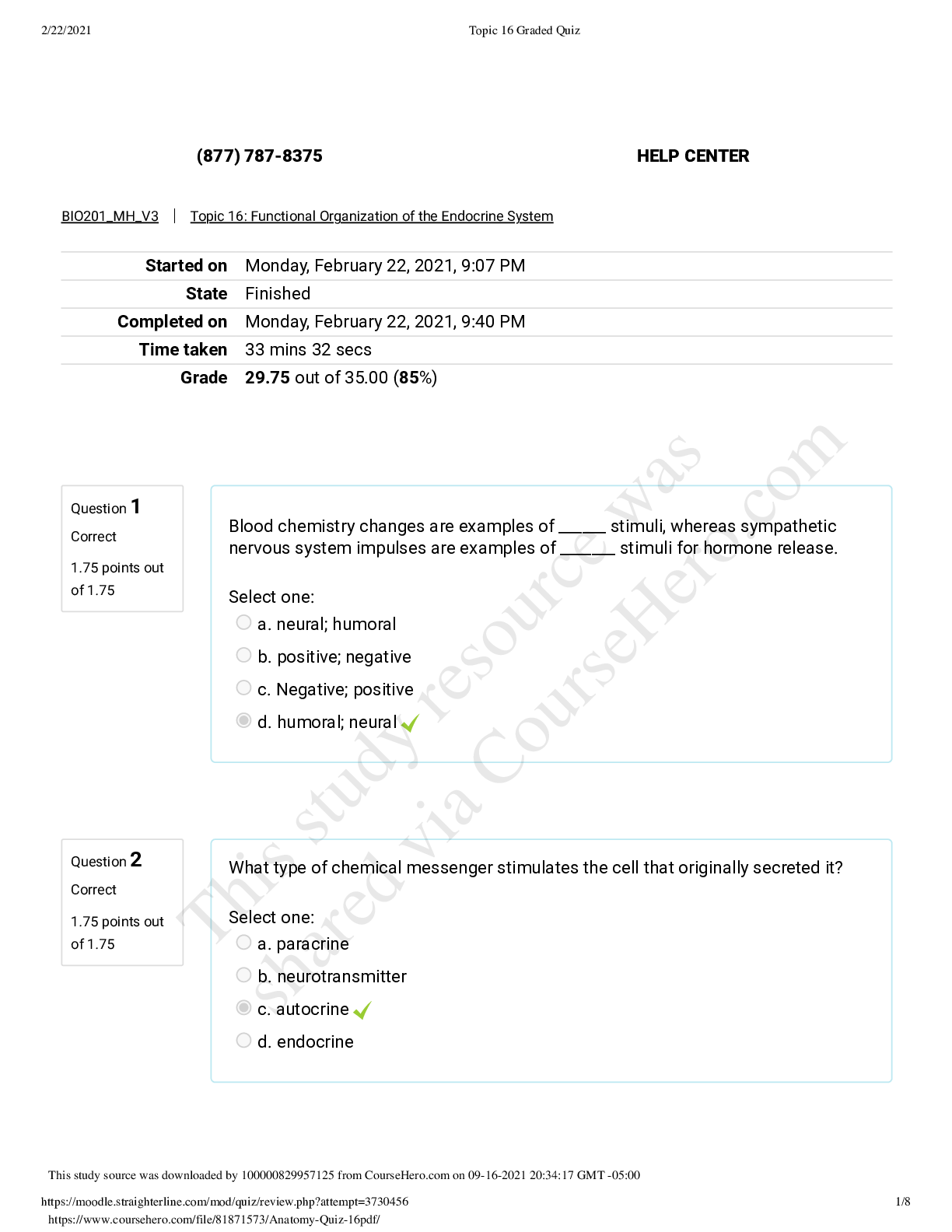
Buy this document to get the full access instantly
Instant Download Access after purchase
Buy NowInstant download
We Accept:

Also available in bundle (1)
Click Below to Access Bundle(s)
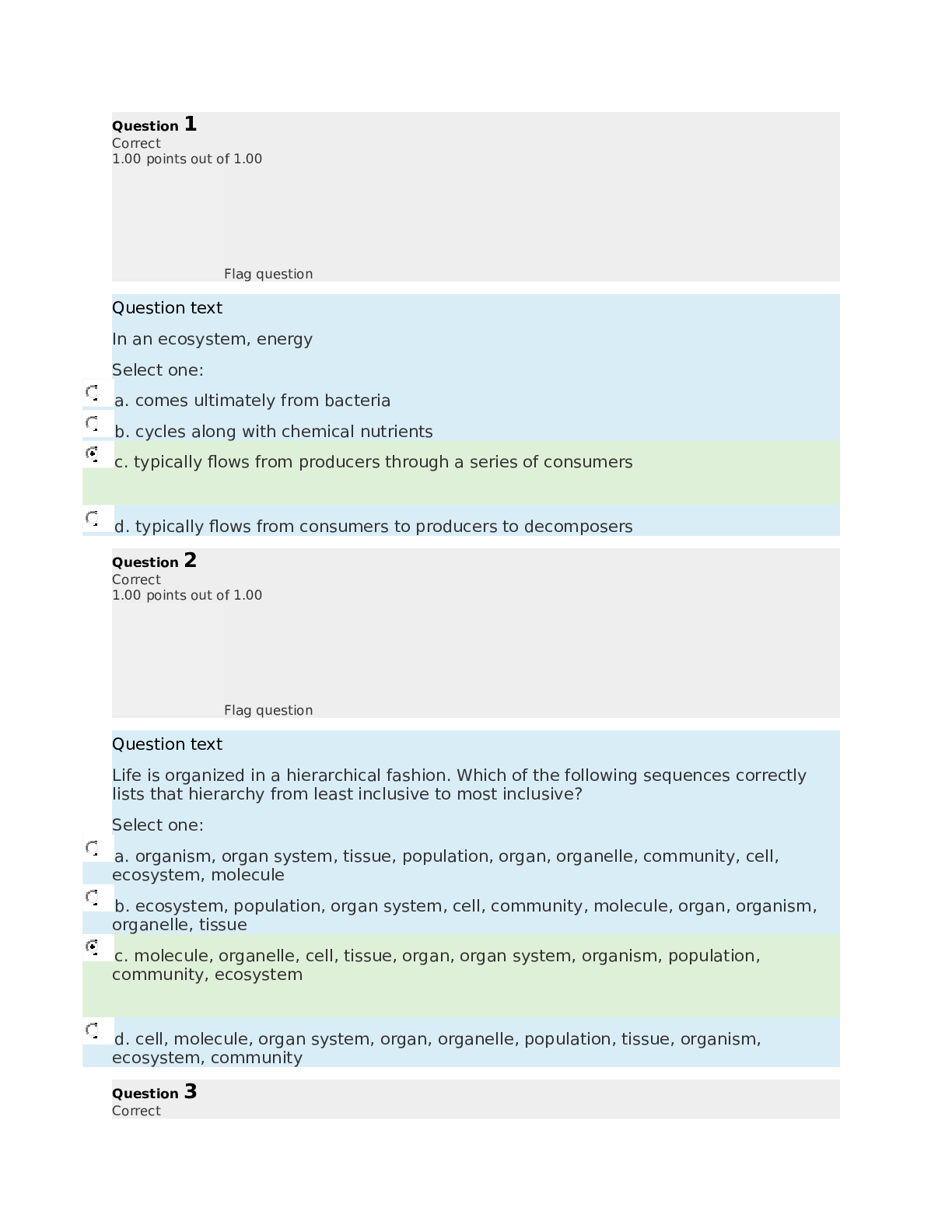
ANATOMY AND PHYSIOLOGY I / BIO201 quizzes 1-16 BUNDLE | Midterm and final exam collection (GRADED A) | LATEST UPDATE | Straighterline
ANATOMY AND PHYSIOLOGY I / BIO201 quizzes 1-16 BUNDLE | Midterm and final exam collection (GRADED A) | LATEST UPDATE | Straighterline
By Prof. Goodluck 4 years ago
$13.5
19
Reviews( 0 )
$15.00
Can't find what you want? Try our AI powered Search
Document information
Connected school, study & course
About the document
Uploaded On
Sep 17, 2021
Number of pages
8
Written in
All
Additional information
This document has been written for:
Uploaded
Sep 17, 2021
Downloads
0
Views
144


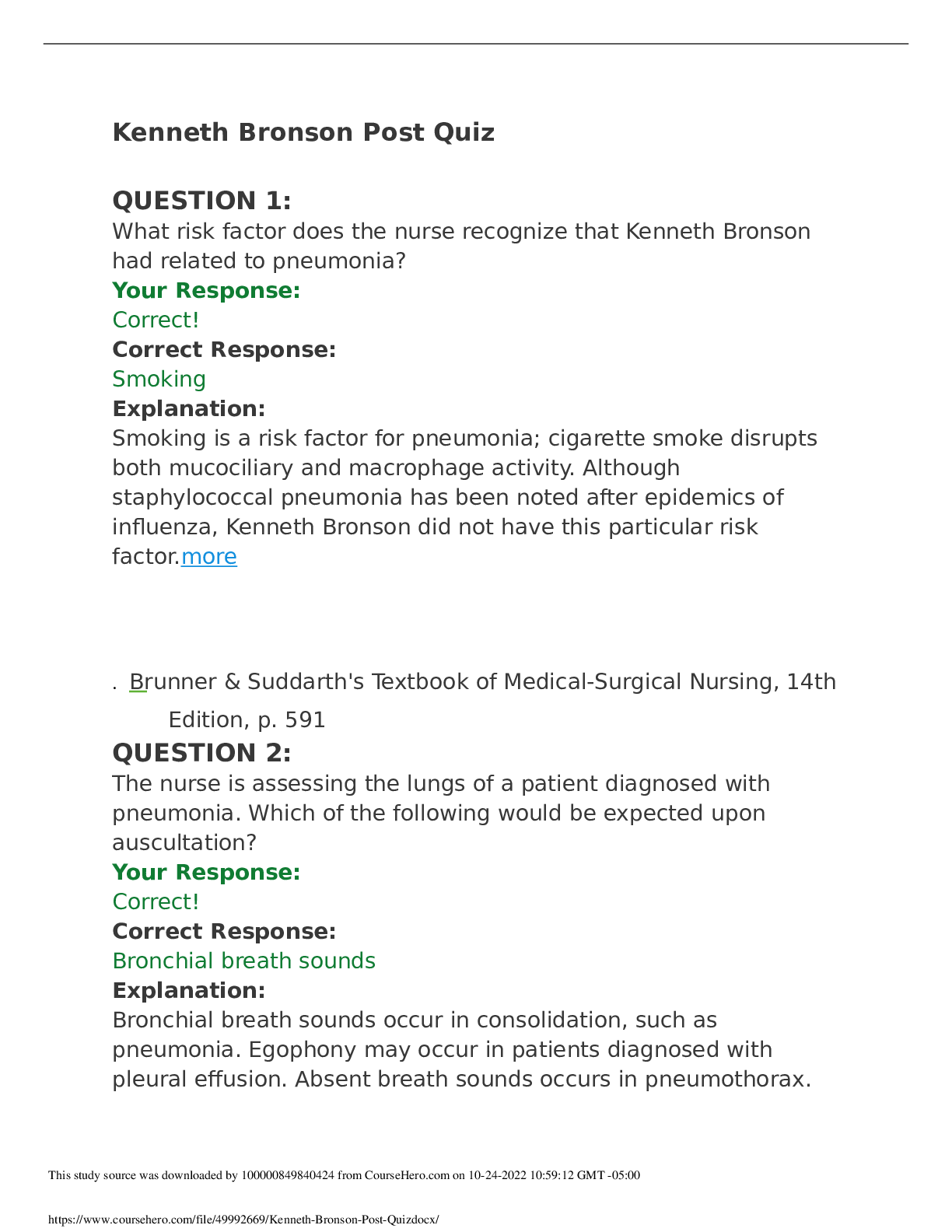



 Questions and Answers 100% VERIFIED.png)
 Questions and Answers 100% correct Solutions.png)







